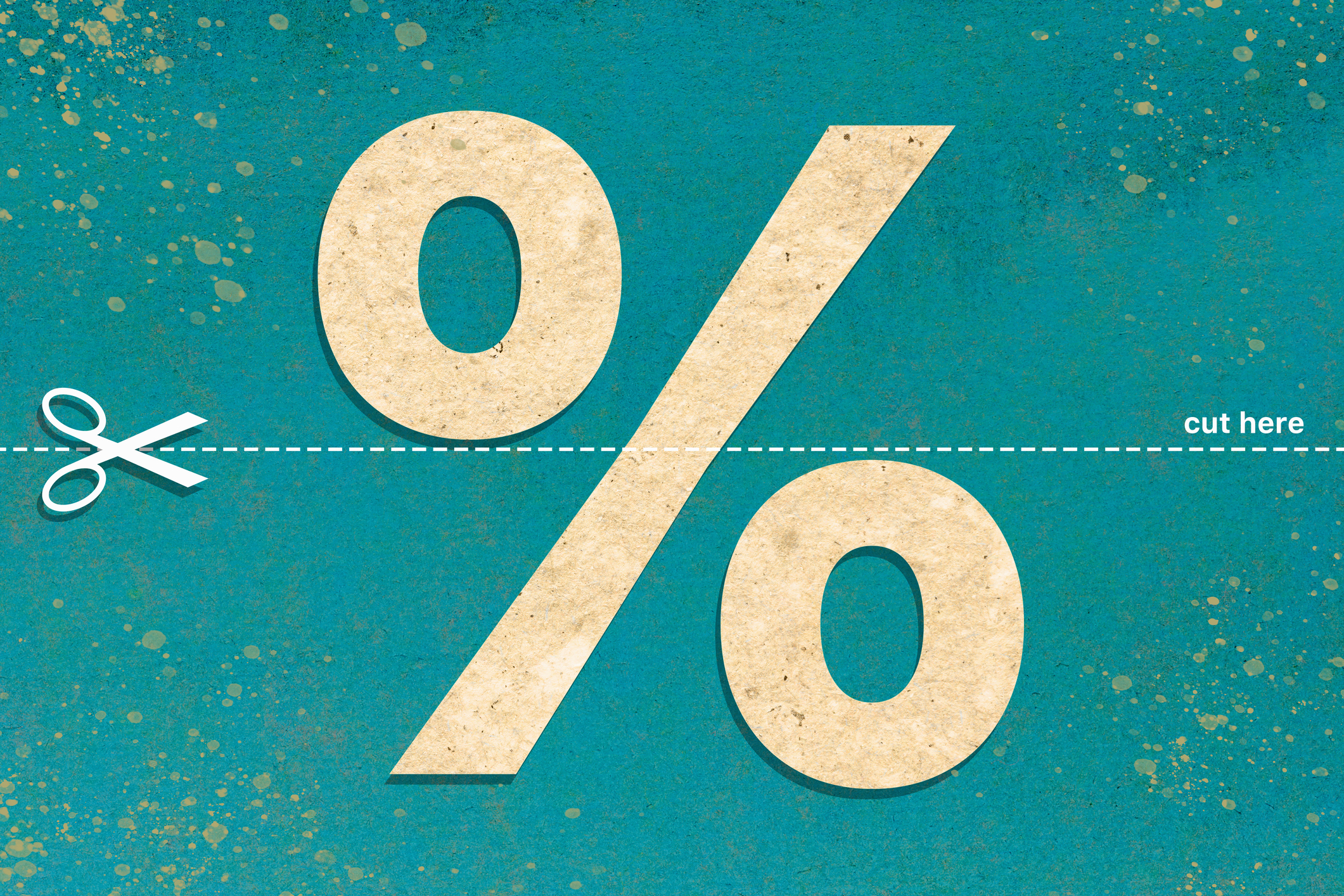Spending Differences in Boomers vs. Millennials
Boomers, millennials, Gen Xers and Gen Zers have their own spending patterns and challenges. What do the data show?

Older Americans are increasing their spending faster than younger generations, according to data from Bank of America, which suggests this can be partly attributed to the relatively generous 8.7% cost-of-living-adjustment (COLA) for Social Security beneficiaries this year.
As the bank noted, the COLA was the largest increase in 40 years for Social Security recipients.
The generational differences were reflected in data that showed overall consumer spending has been relatively stable. According to the bank, baby boomers’ spending increased 2.2% in May, while it dropped 1.5% among millennials and Gen Z.
From just $107.88 $24.99 for Kiplinger Personal Finance
Become a smarter, better informed investor. Subscribe from just $107.88 $24.99, plus get up to 4 Special Issues

Sign up for Kiplinger’s Free Newsletters
Profit and prosper with the best of expert advice on investing, taxes, retirement, personal finance and more - straight to your e-mail.
Profit and prosper with the best of expert advice - straight to your e-mail.
This comes at the same time as many boomers report delaying retirement because of fears about the economy.
As BoA describes it, baby boomers (born 1946-64) and Traditionalist households (1928-45) are showing higher year-over-year growth rates in total credit card spending. Gen X, which is made up of people born between 1965 and 1977, is showing the same weaker trends as millennials and Gen Z.
The differences can pose a challenge for those seeking to talk about money across generations.
BoA found evidence of faster spending growth in households that receive Social Security payments, compared to those that don’t. Another factor, according to the bank, is younger generations are likely to face higher housing costs and the consequences of the end of the student loan repayment moratorium.
Titled “The Young and the Restless,” the report from the bank notes that housing costs are felt differently across generations, which likely contributes to the difference in spending.
The report notes that data shows that Gen Z and millennials are seeing a much higher rise in median rent and mortgage payments than older generations. This comes at a time when boomers have become the largest generation of homebuyers.
Still, younger adults are more likely to move for work or to accommodate growing families. This means, the bank says, that younger generations face more rising rent and house prices as they move around, while older generations may move less.
Another explanation the bank offered is the fact that older Americans reduced spending more during the pandemic, so some of the acceleration in spending may be a recovery from that.
Younger adults overspend because of friends
In the meantime, spending habits are becoming a source of friction among younger adults, according to a survey conducted by Qualitrics on behalf of Intuit Credit Karma.
That study showed 36% of Gen Z and millennials reporting having a friend who drives them to overspend. This is resulting in debt and sometimes ending friendships to protect finances.
The study showed 88% of millennials and 80% of Gen Z who have these overspending friends have taken on debt as a consequence of spending time with that friend. “Millennials are worse off however, with 15% admitting they’ve taken on $500 or more in debt as a result of spending time with their spendy friend, compared to just 2% of Gen Z respondents in the same boat,“ the report says.
The overspending is concentrated on dining or drinks and nights out, trips and vacations and birthday celebrations.
Credit Karma notes that the top reasons young survey respondents spend money they don’t have when they’re with these friends include not wanting to feel left out (31% of Gen Z and 32% of millennials who say they have a friend who drives them to overspend), wanting to keep up with their friend’s lifestyle (29% of Gen Z and 28% of millennials) and wanting to please their friend (29% of Gen Z and 28% of millennials). Another 28% of millennials admit they just don’t know how to say “no” to this friend.
Note: A version of this item first appeared in Kiplinger Retirement Report, our popular monthly periodical that covers key concerns of affluent older Americans who are retired or preparing for retirement. Subscribe for retirement advice that’s right on the money.
Related Content
Profit and prosper with the best of Kiplinger's advice on investing, taxes, retirement, personal finance and much more. Delivered daily. Enter your email in the box and click Sign Me Up.
Elaine Silvestrini has worked for Kiplinger since 2021, serving as senior retirement editor since 2022. Before that, she had an extensive career as a newspaper and online journalist, primarily covering legal issues at the Tampa Tribune and the Asbury Park Press in New Jersey. In more recent years, she's written for several marketing, legal and financial websites, including Annuity.org and LegalExaminer.com, and the newsletters Auto Insurance Report and Property Insurance Report.
-
 5 Types of Gifts the IRS Won’t Tax: Even If They’re Big
5 Types of Gifts the IRS Won’t Tax: Even If They’re BigGift Tax Several categories of gifts don’t count toward annual gift tax limits. Here's what you need to know.
-
 The 'Scrooge' Strategy: How to Turn Your Old Junk Into a Tax Deduction
The 'Scrooge' Strategy: How to Turn Your Old Junk Into a Tax DeductionTax Deductions We break down the IRS rules for non-cash charitable contributions. Plus, here's a handy checklist before you donate to charity this year.
-
 IRS Says You Made a Tax Return Mistake? A New Law Could Help You Fight Back
IRS Says You Made a Tax Return Mistake? A New Law Could Help You Fight BackTax Law Updated taxpayer protections change what the IRS must explain on error notices and how long you have to respond.
-
 21 Money Moves Smart People Are Making Before 2026
21 Money Moves Smart People Are Making Before 2026These steps can help trim your tax bill, boost your savings, lower your health care costs and set you up for financial success in 2026.
-
 Giving Tuesday 2025: 'Every Small Act Makes a Major Difference'
Giving Tuesday 2025: 'Every Small Act Makes a Major Difference'GivingTuesday encourages generosity in any form, from donating to charity to helping your neighbors.
-
 How to Position Your Portfolio for Lower Interest Rates
How to Position Your Portfolio for Lower Interest RatesThe Federal Reserve is far from done with its rate-cutting regime. This is how investors can prepare.
-
 Moves to Manage the Soaring Costs of Owning a Car
Moves to Manage the Soaring Costs of Owning a CarIt's costing more and more to keep a car on the road, but you can drive some costs down. Here's how to get a better deal on insurance premiums, repairs and gas
-
 5 Simple Fixes to Save on Heat Bills This Winter
5 Simple Fixes to Save on Heat Bills This WinterWith fuel prices expected to rise 10% or more this winter, making your home more energy efficient will really pay off.
-
 Why It's Worth Booking a Winter Vacation
Why It's Worth Booking a Winter VacationTravel Smart In the early months of the year, travel demand dips — and so do prices.
-
 New Ways to Use 529 Plans
New Ways to Use 529 PlansTax-free withdrawals from 529 plans could help you sharpen your job skills.
-
 Don't Waste Your Money on Bad Gifts. Try This Instead.
Don't Waste Your Money on Bad Gifts. Try This Instead.Holiday Happiness These strategies, backed by behavioral finance, can help you find presents that your loved ones will truly enjoy.